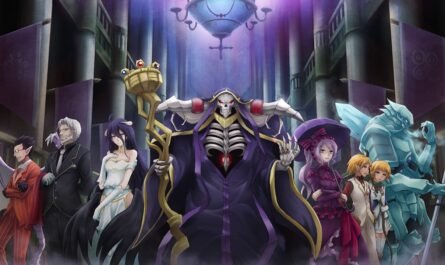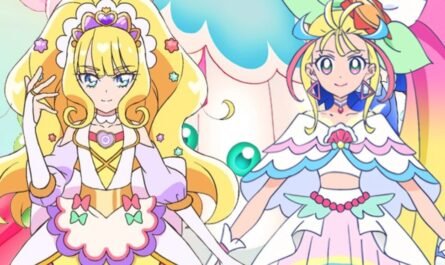Japanese anime works are famous globally, and many people may have the image that “Japanese animation is the best in the world.” However, the market size of the ever-expanding animation production industry began to shrink in 2020. In the background, voices are pointing out the influence of the new coronavirus and the growth of overseas animation production sites. Will the day when Japanese animation “lose” to other countries come due to the growth of overseas animation production sites? We asked two companies that operate Japanese animation-related services for foreigners about the global animation market, which is changing due to the expansion of video distribution services and the growing Chinese and Korean animation.
Overseas technology to shrink and improve the market size of the production industry
According to the “Animation Production Industry Trend Survey” (Teikoku Databank), the market size of the animation production industry (based on business sales) had expanded for nine consecutive years until 2019, but by 2020 it will be 2510. It shrank to 181 million yen (down 1.8% from the previous year). In the background, voices are pointing out the growth of overseas animation and its production companies and delays in production schedules and releases due to the influence of the new coronavirus.
In the video distribution service that spread rapidly due to the corona disaster, animations produced in China and South Korea have come to be seen. According to the same survey, “the rise of the Chinese people may cause the” animation bubble burst “to come back, and there is an urgent need to improve the profit structure.”
Indeed, overseas technology has improved in recent years. Behind this is that it is common for Japanese production companies to outsource part of their production overseas, such as in China, and the technology learned by human resources which came to Japanese production companies from overseas is being brought back to their home countries. There are also things. In response to this situation, there are some columns such as “Japanese animation will lose to China as it is,” but such a point seems to be off the mark for the author who has seen the twists and turns of the animation industry. ..
“Japanese style” animation work produced by China and South Korea
The first thing I would like to confirm is that the trend of anime in the world uses a technique called “photoreal” that aims for realistic expression using CG as represented by Disney Pixar, and it is expressed like a cartoon with a line drawing. The point is that anime, which is also called “cell look,” which is common in Japan, is not mainstream in terms of market size. However, there are fans of Japanese-style anime worldwide that are characterized by such methods, and China and South Korea have established Japanese-style anime works as one of the “genres” in the world.
Last year, the video distribution service spread rapidly due to the coronavirus, and the chances of watching Korean dramas increased. “Itaewon Class,” which became a hot topic in Japan, is based on a Korean manga. In addition, the anime “Tower of God-” based on Korean manga, was produced by a Japanese studio and expanded worldwide in eight languages, and was broadcast terrestrial in Japan. In Chinese animation, “The Legend of Hei” (Roshao Heisenki) was released in theaters in Japan and received high praise. Both are not photorealistic, but “cell look” works. How do traditional Japanese anime fans overseas perceive such Japanese anime-style works from China and South Korea?
In “MyAnimeList,” the outline of the work and the latest news are introduced on the page prepared for each work, and the community is revitalized as an SNS. As of October, the number of users of the “The Legend of Hei” community (work bulletin board) on MyAnimeList is quite limited to over 12,000. “In the first place, there is no environment that can be seen outside of Japan and China, so this is unavoidable. If it is distributed on Netflix, etc., the situation may change, but only Asian people such as Chinese are aware of it. There shouldn’t be one “(Mr. Mizoguchi)
On the other hand, “Tower of God-” is relatively famous. This is said to have timing. In the spring of 2020, amid the corona wreckage, the broadcast of the blockbuster anime was postponed across the board, and the fact that it was able to be broadcast as planned boosted its popularity. But more than that, Mr. Mizoguchi says that the original Korean manga (Webtoon) has been viewed more than 4.5 billion times and already has many fans.
“‘Tower of God’ is highly evaluated by Japanese anime fans overseas, with a clear awareness that it is based on Korean manga. What people on MyAnimeList are looking for is made in Japan. I’m sure you like the style of Japanese cultural animation rather than “being.” “
Anime market expanding to the general public
Until now, people have taken the idea that “animation is something that children see” overseas, and the image of being an otaku is deeply rooted in watching Japanese animation enthusiastically. However, changes are beginning to appear there as well.
“In the United States, so-called celebrities such as Michael B. Jordan and Billie Eilish have also begun to profess to love anime, making them more major in international pop culture.” Alden Mitchell Budil, Global Partnership / Content Strategy Head of Crunchyroll, a video distribution service specializing in anime in the United States, said.
Crunchyroll launched in 2006 as a so-called video posting site. Initially, Japanese animation was often posted without permission. In 2008, with the start of the simulcast distribution of “NARUTO Shippuden,” we partnered with TV TOKYO. Now we are developing more than 1000 works in more than 200 countries and regions with the officially licensed distribution of Japanese animation. Doing. And in August of this year, the Sony Group acquired Crunchyroll.
Until such video distribution services became widespread, overseas Japanese anime fans had no choice but to watch illegally uploaded works, and viewing opportunities were limited. Due to the rapid spread of distribution services and the impact of the new coronavirus worldwide, the number of users has “exponentially increased” in recent years, Budir said.
Of the nine works that Crunchyroll gave as famous works in 2020, most were Japanese anime works. Still, after all, the aforementioned “Tower of God-” and the Korean manga original “THE” “GOD OF HIGH SCHOOL God of High School” is also included.
On the other hand, I would like to pay attention to the fact that Japanese manga, especially the works based on Weekly Shonen Jump, occupy most of the ranking. A similar trend was seen in the popular anime rankings on MyAnimeList.
“Our business is centered around anime made in Japan,” said Crunchyroll’s Budir, but at the same time, “animation possibilities come from everywhere. Works made in the world also succeed in Japan. I also hope there will be more opportunities, and I would like to try new opportunities and formats to raise awareness of “animation” worldwide, including those. ” It also shows the posture.
There is no point in competing for victory or defeat in “Japanese / Overseas.”
Teikoku Databank analyzes that competition with foreign countries will intensify in production and distribution, but that does not mean that “Japanese animation loses overseas.”
The number of Japanese animations purchased by Chinese video platforms is declining, but the Chinese market is extraordinary, making numerical comparisons difficult. Under the leadership of Xi Jinping, China currently has strict regulations not only on Japanese animation but also on cultural content both inside and outside Japan. Japanese animation can now be seen in China as well. Still, it will likely be subject to even greater restrictions in the future due to the priority of its industry and restrictions on expression.
In the first place, as works are being made globally, it is challenging to separate anime from “○○, “and it doesn’t make much sense. Mr. Mizoguchi, the representative of MyAnimeList, also said, “There is still room for more people to read Japanese manga in the world. And Japanese animation is still smaller than Disney’s animation, for example. Let’s catch up with Disney. In that case, the brand will be asked not what country the work was born from but which studio made it, just like movies. “
A survey by Teikoku Databank also points out that major studios are still profitable even when the number of broadcasts in Corona decreases. Improvements in the production environment, which is said to be “low compensation and a harsh working environment,” are gradually progressing, centered on significant studios. Increasing profits due to the expansion of video distribution services will also be a tailwind.
In this way, the small and medium-sized subcontracting studios have pointed out that the management base was weak before the Corona disaster, and the industry is becoming more polarized. If we focus purely on the “production” of anime, the future of domestic business is certainly uncertain. However, it should be noted that the source of the content power of animation is not “where did you visualize it?” But “copyright” creates businesses such as distribution rights and commercialization. Looking at the popular anime rankings overseas, as pointed out earlier, it can be seen that Japanese manga originals are overwhelmingly popular. Japan’s superiority is clear even compared to China, which tightens expression restrictions, and South Korea, which does not currently have a foundation for manga development and publication distribution. It can be said that it is unreasonable to assume that “will lose in the world.”
With the expansion of the global production system using “Japanese” expression methods, many “Japanese” works produced mainly by overseas studios will continue to be produced. They will continue to be supported by fans all over the world. It will be. That means that content power starting from Japanese anime and manga will become even more critical in the future.











